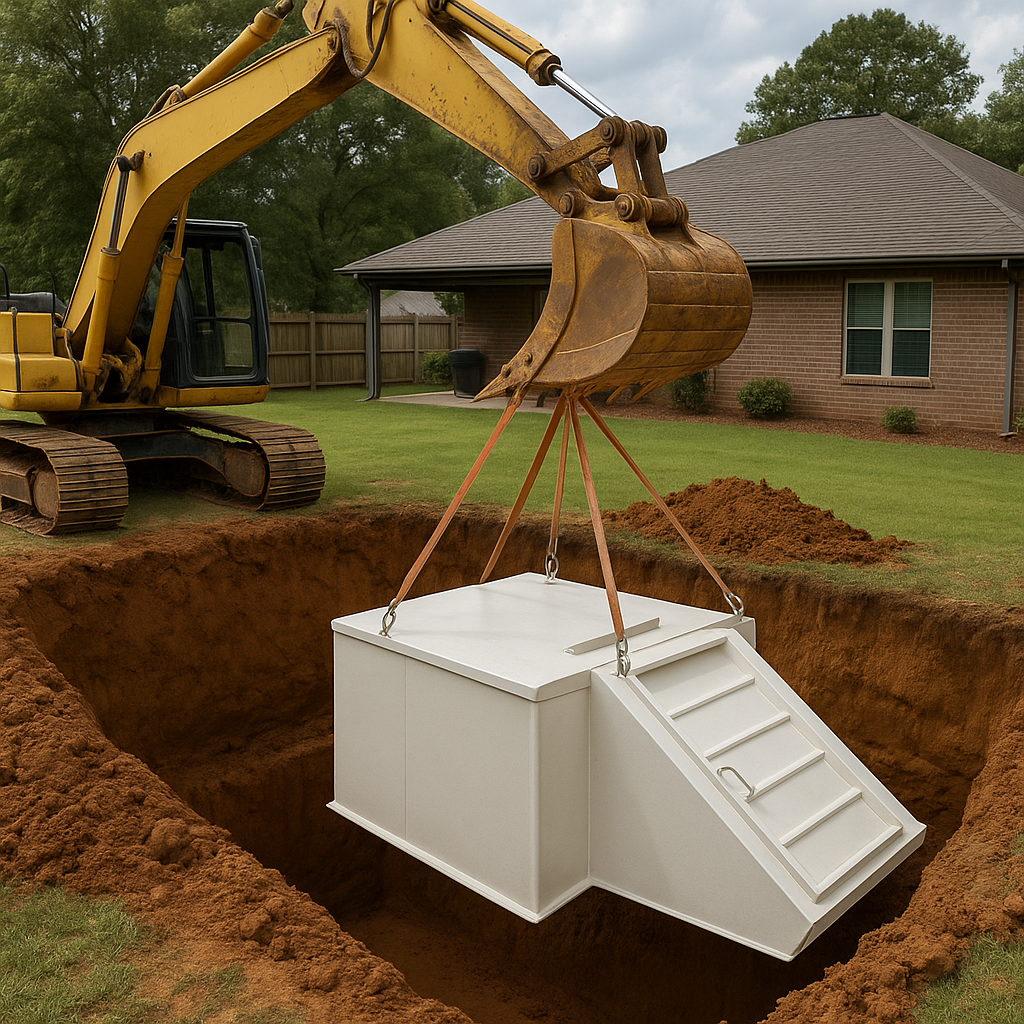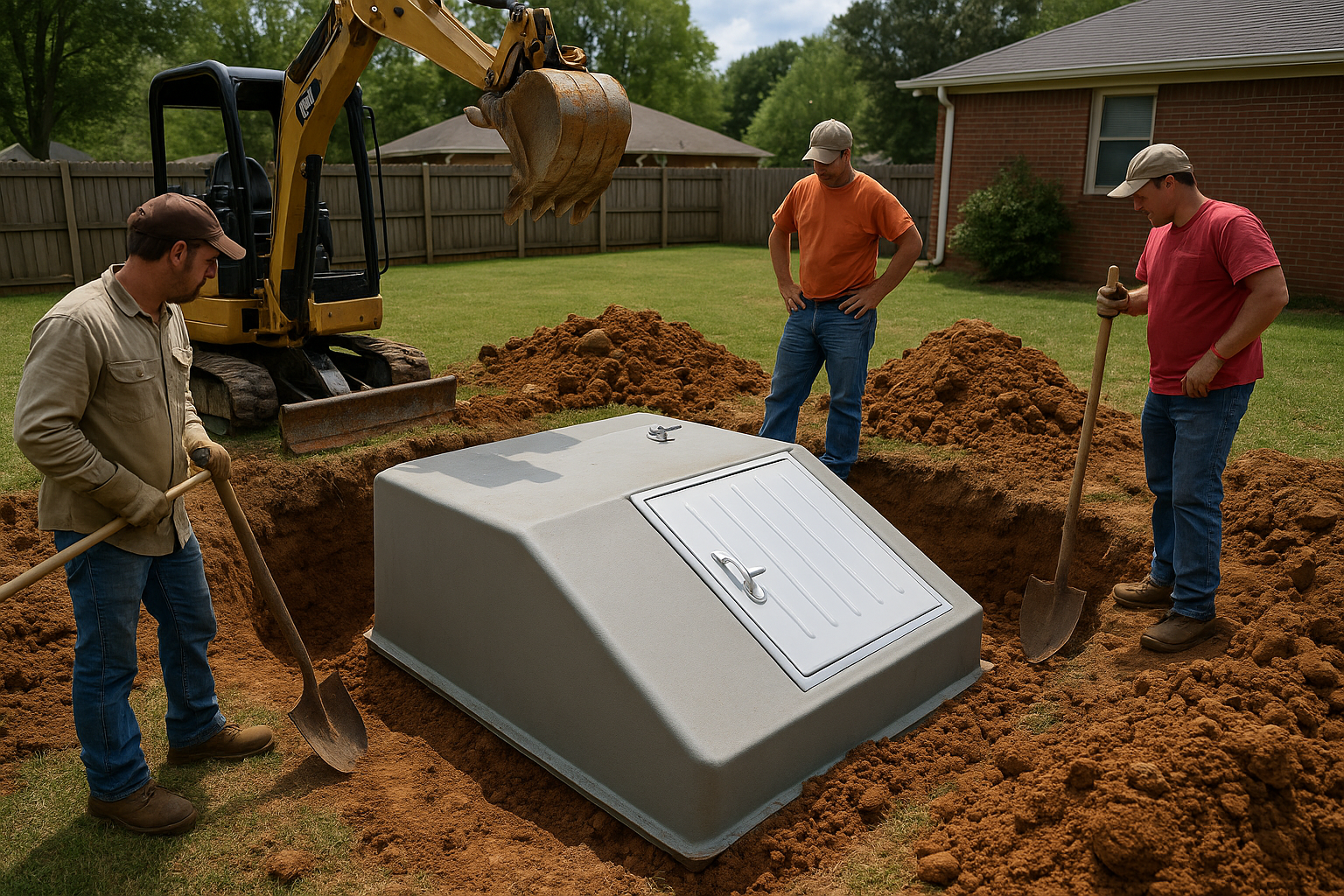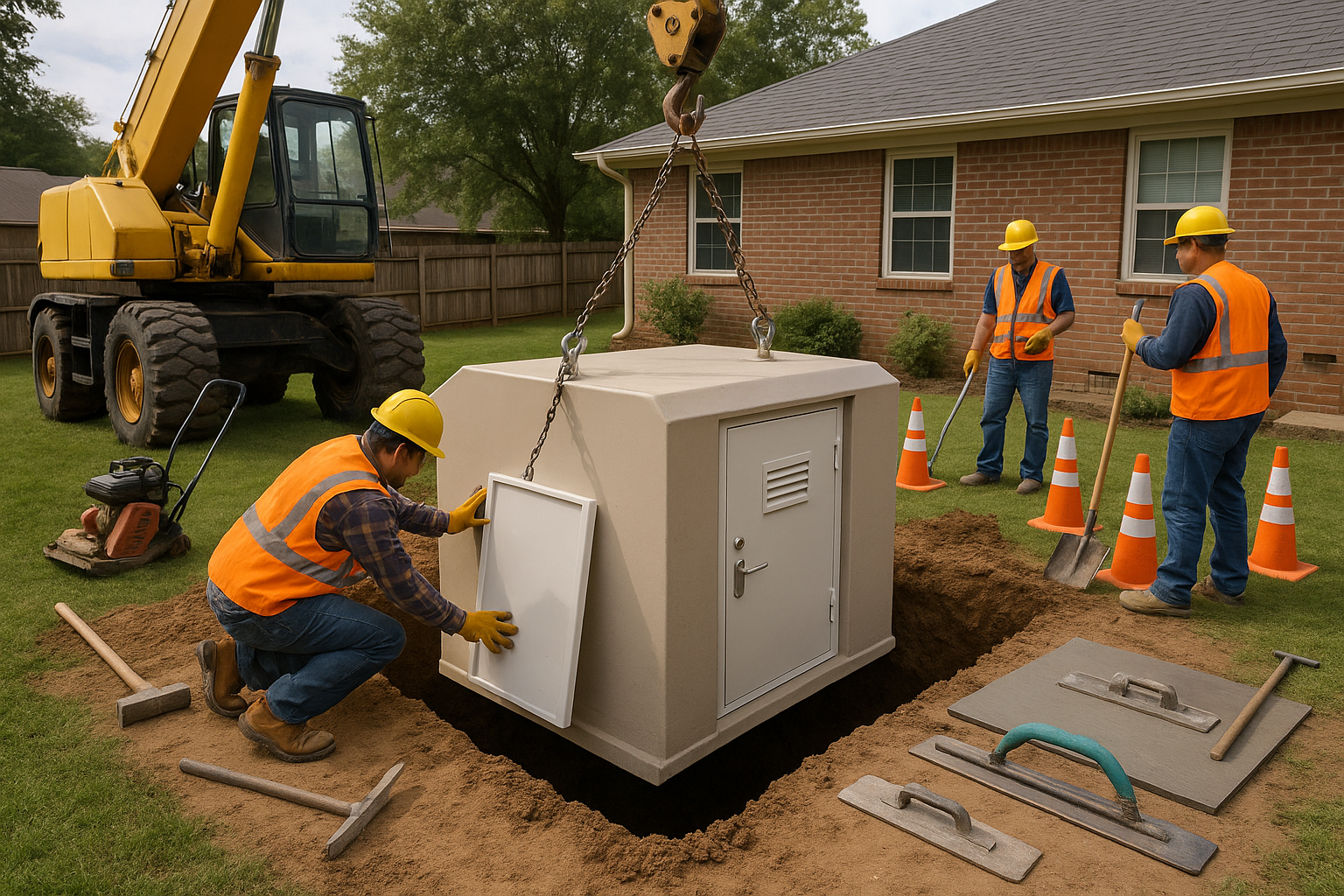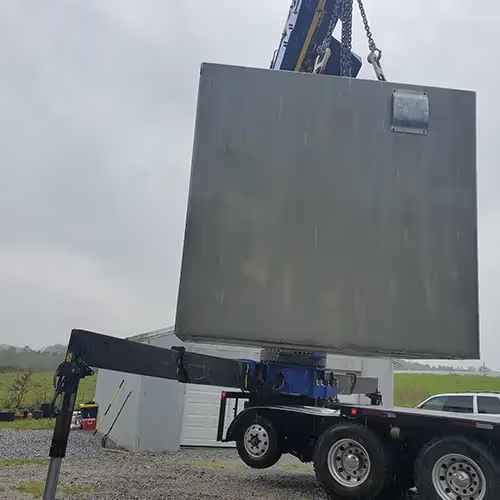DIY Above Ground Tornado Shelters: What You Need to Know Before You Build

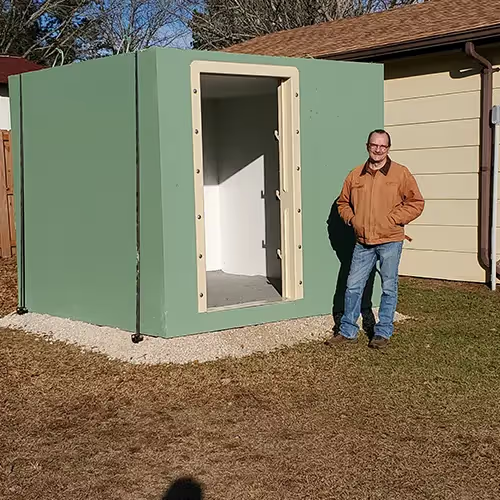
Have you ever watched a storm roll in and wondered if your home could really withstand a powerful tornado? It’s a thought that crosses many homeowners’ minds, especially if you live in an area where severe weather is a yearly concern. The idea of having your own above ground safe room or backyard storm shelter can bring peace of mind, but knowing where to start can feel overwhelming.
Building a DIY storm bunker or engaging in proper tornado shelter construction might seem like a daunting project, but with the right knowledge and preparation, it’s entirely achievable. Understanding what materials to use, the correct tornado shelter foundation, and following a storm cellar installation guide ensures your project will be both safe and effective. Using the right tornado shelter materials, including reinforced steel, concrete, or a combination, is essential for long-term durability and protection.
Proper planning also includes considering your family’s accessibility, emergency protocols, and overall home tornado safety. A well-built reinforced tornado shelter can make all the difference in protecting your loved ones when severe weather strikes. By taking the time to carefully research local building codes and FEMA-approved guidelines, you’ll be better prepared to design a shelter that balances convenience, safety, and durability. Whether you are tackling a full DIY project or incorporating a prefab tornado bunker, a strong, code-compliant shelter will provide emergency tornado protection and peace of mind during the unpredictable storm season.
Understanding Above-Ground Tornado Shelters
For decades, tornado shelters were primarily built underground, often beneath basements, garages, or backyards. Underground shelters offered natural protection against high winds and flying debris, but modern advances have shown that above ground disaster refuge structures can be equally safe if built correctly. Concrete storm shelters in Alabama are a popular option, as well as prefab tornado bunkers and above ground bunker kits, because they provide accessible, flood-resistant protection without the complications of excavation.
An above ground safe room is a tornado-resistant structure engineered to withstand extreme wind speeds and debris impact. Properly installed on a reinforced concrete tornado shelter foundation and anchored with heavy-duty bolts or rebar, these shelters remain secure during even the most violent storms. Modern tornado shelter materials like reinforced steel or concrete are designed to meet FEMA and ICC 500 standards for wind resistance and debris protection. Steel vs fiberglass storm shelters provide insight into material choices for durability and safety.
Accessibility is another advantage. Families with children, older adults, or people with mobility challenges often find it easier to reach backyard tornado bunker plans than to descend into underground options. Today, many homeowners choose prefab tornado bunkers for quick assembly and integration with home construction. Understanding these benefits underscores why home tornado safety isn’t only about having a shelter but having a safe, durable, and accessible refuge that protects everyone in the household.
Key Components of a Safe Above-Ground Tornado Shelter
Before gathering materials or drafting your plans, it’s critical to understand the components that make an above ground safe room effective. Every element contributes to tornado risk mitigation, ensuring your shelter can withstand high winds, debris, and extreme conditions. Attention to detail in design, materials, and installation is key to safety.
- Structural Frame – The backbone of your shelter, typically made from reinforced steel or concrete. It must resist both high winds and flying debris without bending or collapsing. For tips on integrating comfort with safety, check luxury storm shelters for safety and comfort.
- Anchoring System – Heavy-duty bolts or steel anchors securely connect the shelter to a tornado shelter foundation, preventing uplift, sliding, or overturning during a tornado.
- Impact-Resistant Walls and Doors – Certified to meet FEMA and ICC 500 standards, capable of resisting debris traveling at speeds up to 250 mph. Multiple locking mechanisms and reinforced hinges provide extra protection.
- Ventilation and Emergency Access – Small, protected air vents provide airflow without compromising the structure. An interior release mechanism ensures safe exit even if debris blocks the exterior.
- Location and Accessibility – Position the shelter where everyone can reach it quickly, often in a garage, utility room, or backyard disaster shelter site.
Neglecting any of these elements can compromise the shelter’s effectiveness. Following storm shelter blueprints, using quality tornado shelter materials, and implementing proper tornado shelter reinforcement are essential for building a reliable DIY or prefab solution that keeps your family safe during storms.
Why Choose an Above-Ground Tornado Shelter
Choosing an above ground disaster refuge goes beyond just safety; it offers convenience, peace of mind, and practical advantages for everyday living. These shelters combine engineering strength with accessibility, providing a reliable space for families during severe weather.
- Easier Accessibility – Quick access without navigating stairs or slippery underground surfaces, critical for children, older adults, or anyone with mobility challenges.
- Flood Resistance – Above-ground shelters stay dry, avoiding the water accumulation that can occur in underground shelters.
- Simpler Installation – Many shelters can be installed using storm shelter DIY instructions, often on the same day.
- Customizable Design – Options include tornado-proof safe room configurations or fully integrated shelters that match your home layout.
- Equal or Greater Safety Standards – When built to FEMA and ICC 500 guidelines, above-ground shelters can withstand EF5-level tornadoes.
Accessible, code-compliant shelters increase home value and provide reassurance that your family has a safe, reachable space. Modern prefab tornado bunkers and DIY solutions offer flexibility, allowing homeowners to prioritize tornado survival planning and emergency tornado protection without the complexity of underground construction. By investing in a durable, accessible shelter, families can face storms with confidence, knowing they are prepared for the unexpected.
Potential Challenges
Even the best plans encounter hurdles, and above ground safe rooms are no exception. Being aware of potential challenges ensures your shelter meets both safety and usability requirements.
- Higher Initial Cost – Use a tornado shelter cost estimate to account for size, materials, and design. Above-ground shelters can be more expensive than underground options.
- Space Requirements – Ensure a strong, reinforced surface for the reinforced tornado shelter, such as a concrete slab or garage floor.
- Building Permits and Codes – Most areas require compliance with tornado shelter regulations and inspections to ensure structural safety.
- Aesthetic Limitations – Prefab units may appear industrial; tornado shelter landscaping ideas can help integrate them with your home design.
- False Sense of Security – Improper tornado shelter reinforcement can make even well-designed shelters unsafe.
To address these challenges, consult local experts, adhere to FEMA and ICC guidelines, and invest in high-quality tornado shelter materials. Implementing tornado preparedness tips during planning and installation will ensure your shelter is durable, safe, and accessible.
How to Plan and Build Your Above-Ground Tornado Shelter
Careful planning is essential to build a secure DIY emergency storm room or above ground safe room. Following step-by-step procedures ensures a reliable, long-lasting shelter.
- Research Local Building Codes and Permits – Verify compliance with tornado shelter regulations.
- Choose the Right Location – Accessible for all family members, supporting tornado safety for families.
- Design Your Shelter – Use storm shelter blueprints or a tornado shelter installation guide for planning.
- Prepare the Foundation – Install a reinforced tornado shelter foundation to handle high wind loads.
- Build or Install the Structure – Use storm shelter DIY instructions or install prefab tornado bunkers.
- Add Essential Features – Install tornado shelter lighting, proper ventilation, and a stocked tornado survival kit essentials.
Test doors, ventilation, and emergency features before storm season. Utilize FEMA P-320, Ready.gov’s tornado emergency checklist, and local consultations for guidance. Precision in assembly and careful material selection ensures a safe and durable structure that meets FEMA and ICC standards.
The Future of Tornado Shelters
Tornado shelter innovation is accelerating with smarter, stronger, and more adaptable designs. Advanced tornado protection solutions and materials enhance safety while improving usability.
- Smart Technology Integration – Weather alerts, automatic locks, and air quality sensors connected to smartphones.
- Lightweight, High-Strength Materials – Safer, easier-to-install DIY storm bunker options.
- Modular and Expandable Designs – Prefab tornado bunker units can expand or serve secondary functions.
- Energy Efficiency and Comfort – Improved emergency shelter design with ventilation, insulation, and lighting.
- Community and Shared Shelters – Neighborhood backyard disaster shelter networks for cost-effective safety.
These advancements make shelters safer, more versatile, and better integrated into modern homes, ensuring families are prepared for future storms.
Building Confidence in Your DIY Above-Ground Tornado Shelter
Creating a DIY emergency storm room or above ground safe room is more than construction—it’s a long-term investment in home tornado safety. Understanding tornado shelter safety features, tornado survival planning, and storm shelter cost breakdown equips you to make confident decisions for your family’s protection.
Take actionable steps: research local codes, review FEMA guidelines, choose the right tornado shelter materials, and plan your backyard storm shelter layout. With preparation and diligence, you’ll have a reliable tornado-proof safe room ready when it matters most.

